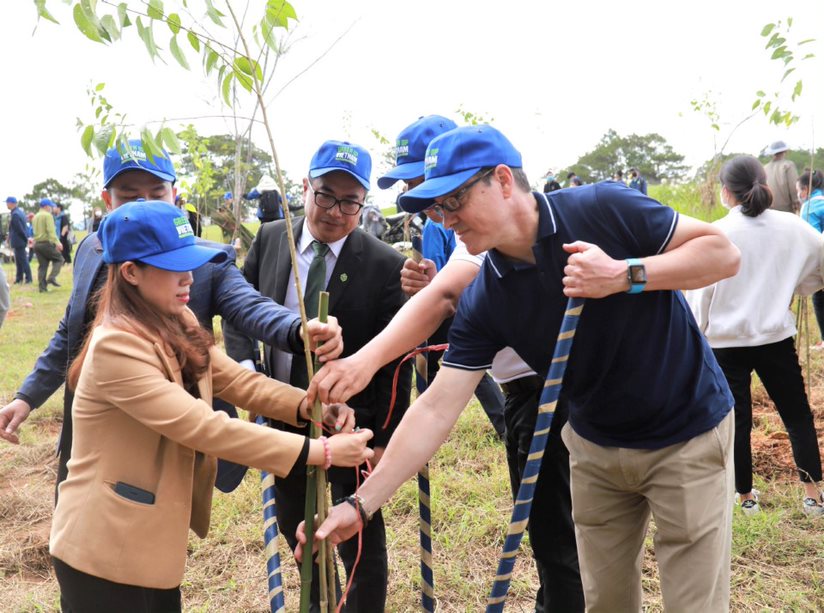Green economy, green growth and sustainable development are indispensable trends all over in the world.

Green economy, green growth and sustainable development are indispensable trends all over in the world.
The Vietnamese Government’s commitment to sustainable development is expressed firmly through its National Green Growth Strategy for 2021 – 2030, with a vision for 2050.
At the 26th United Nations Climate Change Conference of Parties (COP26) in Glasgow, Scotland, Prime Minister Pham Minh Chinh affirmed Vietnam’s commitment and determination to reduce greenhouse gas emission with the ambition to achieve net zero emission by 2050, with the support from the international community in terms of technology transfer and finance and its own internal resources. The country also determines to all targets
With its own internal resources and the support from the international community in terms of technology transfer and finance, the country also plans to achieve all targets in terms of socio-economic growth and environmental protection, and fulfill the commitment of green
At the beginning of this month, the virtual Vietnam Corporate Sustainability Forum – “Toward a better decade of sustainable development: Leaving no one behind” (VCSF 2021) discussed the key issues and how corporations can contribute to the inclusive and sustainable socio-economic growth of the country through circular economy and reduction of greenhouse gas emissions.
The corporate community recognises therefore that protecting the environment is not just a responsibility but also helps them improve their competitiveness and ensure sustainable development.
As one of the top 10 sustainable-development companies in Viet Nam, Novaland has been implementing green strategies. It is a pioneer in the real estate market in applying Excellence in Design for Greater Efficiencies (EDGE) of International Finance Corporation (IFC) in designing and constructing projects. The materials used in its projects are friendly to the environment.
Novaland also uses advanced technologies including green energy, for onsite waste segregation and in developing smart ecological urban areas.
It has also tied up with Packaging Recycling Organisation Vietnam (PRO VN) to recycle and segregate wastes at its property projects to improve people’s awareness of environment and community health protection.

For a green Viet Nam
In the last two decades Viet Nam has been badly affected by climate change, land degradation and storms, which have caused a reduction in forest cover.
To reverse the damage, a ‘Tree Planting Festival’ announced by the Prime Minister seeks to grow one billion trees in 2021-25.
In 2021 the number of trees planted was 1.5 times that of the previous year. It is planned that the number of trees will double in 2022-25 from 2020.
The festival has elicited a strong response from cities and provinces around the country and companies, all of whom now have plans to plant trees and grow and protect forests.
Dr Le huy Ba, former director of the Industrial University of HCM City’s Institute of Environmental Science, Engineering and Management, said provinces and cities have received support from many corporates in carrying out the programme.
He cited the example of Novaland, which helped plant 50 million trees in Lam Dong Province and 10 million in Ba Ria-Vung Tau, Dong Nai and Binh Thuan.
It has carried out a programme called ‘Green Up Viet Nam” in provinces and cities all over the country.
Besides, many programmes to protect the environment are being implemented in many provinces and cities such as one to prevent sanlinisation of rivers in the Mekong Delta and provide clean water to schools and build roads in rural areas.
For many provinces, these programmes have brought big benefits like improving public awareness of environmental protection.
According to many scientists, planting a billion trees is an important prerequisite for Viet Nam to move towards sustainable development.





